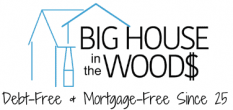It was a warm, spring day and we were finally done. We put our very last mortgage payment in the mail, loaded our truck with suitcases, and hit the open road.
We were on our way to have a relaxing visit with my in-laws at their home in the country. But, on the way, we were going to stop and celebrate.
We hadn’t eaten out in a year and we were ready to sit back and enjoy the debt-free journey we had just finished. We went “all in” that night. We ordered sweet tea instead of water, an appetizer, delicious meals, and dessert.
Victory tasted so sweet.
After 13 months of hard work, radical money-saving techniques, and a lot of fun, we were finally debt-free.
A Quick Backstory
We have been debt-free since we were 25. And when I say “debt-free,” I also mean mortgage-free.
So, we know a thing or two about debt and how to get out of it.
Since the beginning of our marriage, we knew that we would never be happy if we owed anyone for anything…even our house. We would never feel free.
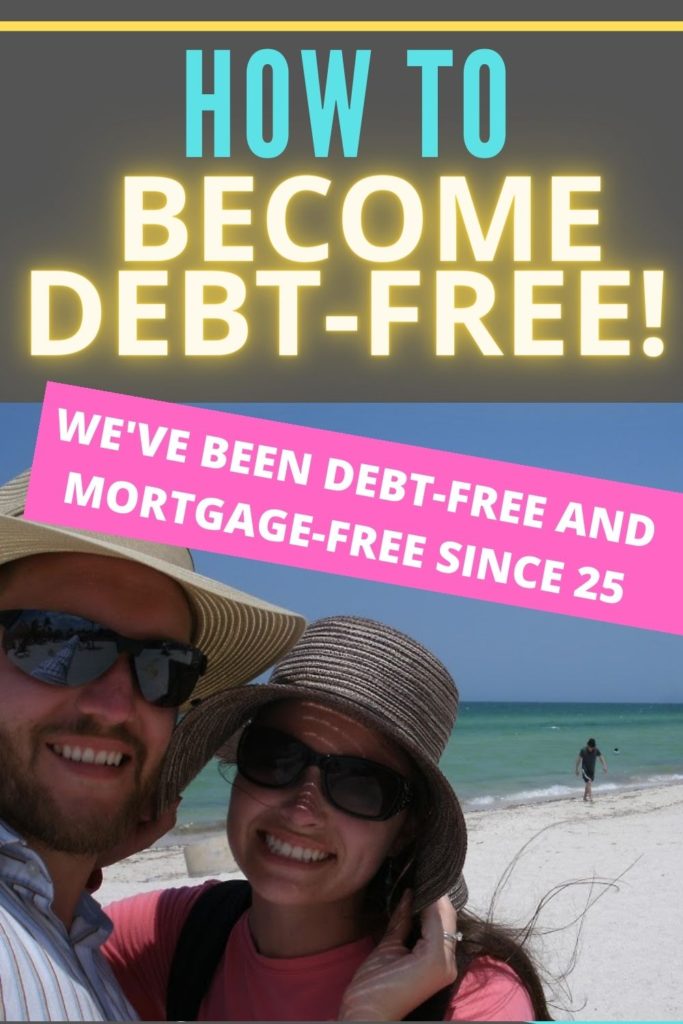
When we bought our first house, we took out a mortgage on it. At the time, we knew it was a good financial decision because we bought well below what the bank said we could afford and we made a plan for how we would pay it off quickly.
Since then, we have never been in debt again.
No credit card bills, no mortgage, no student loan payments. Nothing.
Related content: Debt-Free by 25 – How We Did It
So, here’s the big question…
How to Become Debt-Free
Becoming debt-free is simple…in theory. It’s about spending less money than you make then applying that saved money toward your debt.
It’s a lot like losing weight.
To lose weight, you have to burn more calories than you intake.
But you must move beyond the theory.
You must be diligent because the journey may test you.
Let’s nail down how to become debt-free once and for all!
Bascially, you have to make a plan of attack and put it into motion.
Everyone has different situations with different amounts of debt. You must determine the best debt-free path to take that meets your needs.
I’ll help you.
Let’s lay this all out.
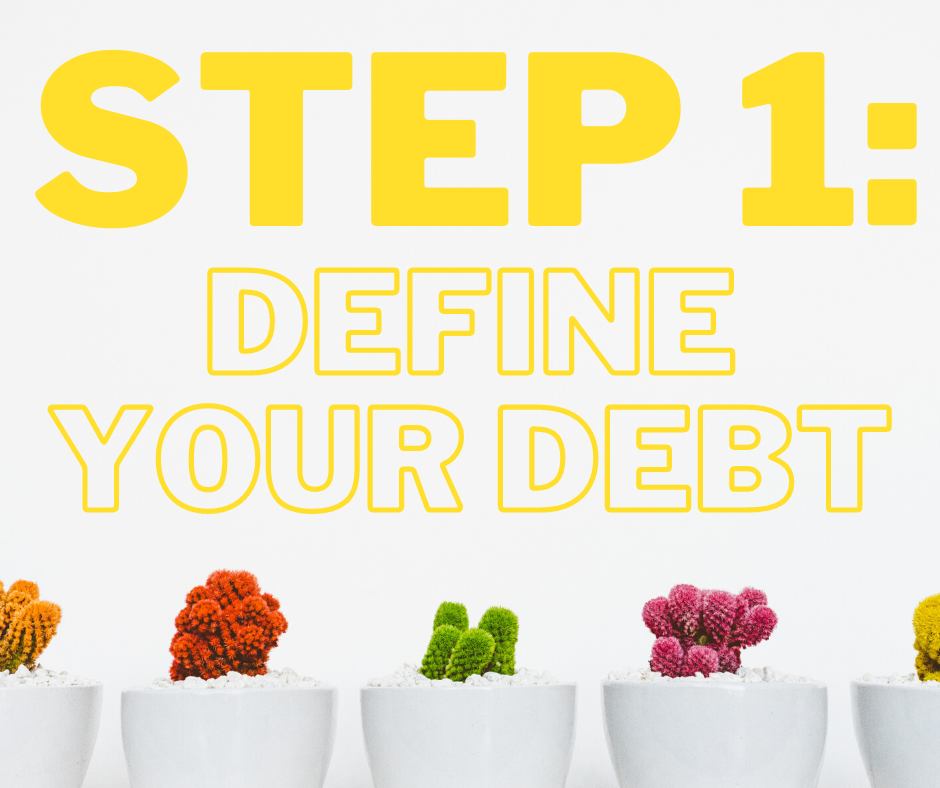
How to Become Debt-Free Step 1: Define Your Debt
Ask yourself:
Where does all my money go?
This is where all of the mystery lies. Am I right?
Your paycheck comes in and then leaves so quickly that you barely saw it.
It was like a flash of lightning.
You worked hard all week for that check. For what?
Just to make payments on your iPhone?
So you can make minimum payments on your credit card bill then watch that interest continue to rack up?
This is where the rubber meets the road.
You need to write it all down.
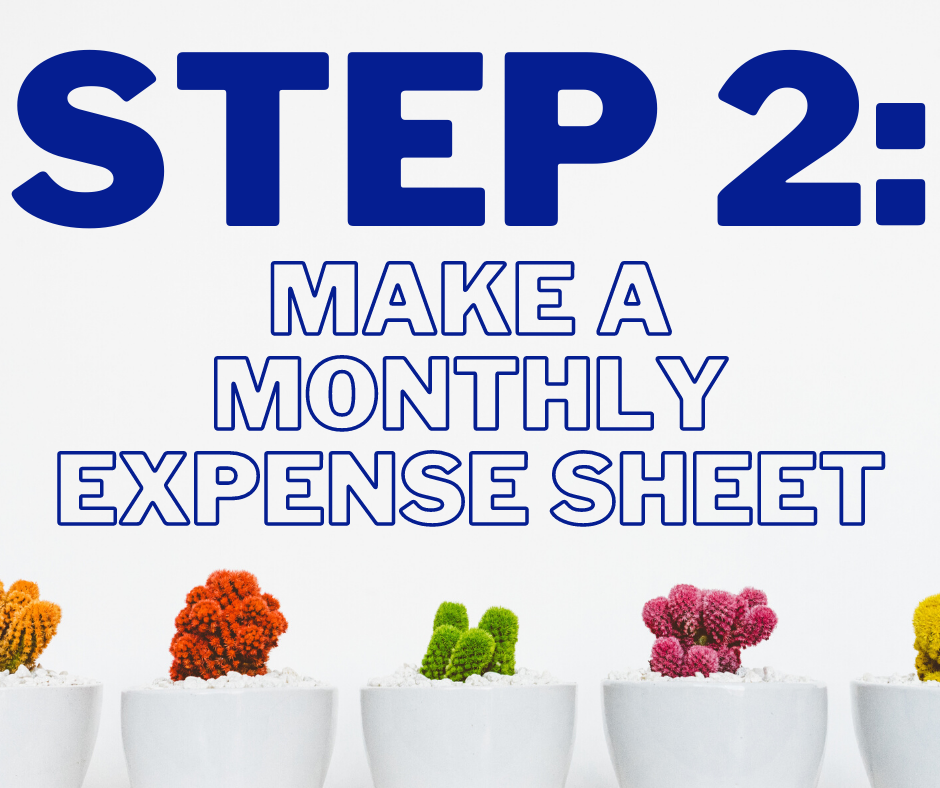
How to Become Debt-Free Step 2: Make a Monthly Expense Sheet
Get out a pen and paper and write down what you spend money on each month. Be honest with yourself and write down EVERYTHING.
This is not the time to pretend like you don’t run through the drive-through for a latte each morning or a sweet tea each afternoon.
I’ll be honest. Your social media posts can be VERY revealing here. Scroll through and find all of your posts from the Mexican restaurant down the street or your selfies in those new clothes.
Or…that picture of you and your new air fryer.
Make a big list. Be sure to also include all of your necessary expenses here like mortgage/rent, utilities, gas, car payments, health insurance, etc.
Everything you spend money on needs to be on this list.
Now, let’s start sorting
Classify Your Expenses
It’s time to get out your highlighters
Maybe you haven’t touched a highlighter since high school or college but you’ll want to dig them out.
This is exactly how we sorted our necessary expenses from things we wanted to cut back on or cut out when we were paying off our mortgage. We grabbed our list of expenses and three highlighters of different colors.
I’ll go with green, yellow, and pink just to keep things simple.
Highlight everything necessary in green. These are things you absolutely cannot avoid.
Green things include mortgage/rent, utilities, health insurance, etc.
We all have it. No one likes it.
Highlight everything you need to cut back on in yellow.
This step is VERY important.
I could look at EVERY expense sheet of people I know and highlight dozens of things they could cut back on to save themselves a lot of money.
One item that should be highlighted in yellow is your grocery bill.
There are 4 things we did to save money at the grocery store so we could pay off our mortgage faster.
These money-saving techniques at the grocery store can save you money that you can then apply to ANY debt you have.
If you study your receipt after you shop, you would be surprised at what you could cut back on or change to lower your bill and most likely eat healthier.
Another item to highlight in yellow is your cell phone bill.
How to Save Money on Your Cell Phone Bill
Many people spend WAY too much money on their cell phone service.
I wrote an entire article about the best inexpensive cell phone service provider that we use. It is worth reading.
We use Red Pocket and we currently pay $30 a month.
What most people don’t know is that with Red Pocket, you can get exactly what you have now: YOUR phone, the SAME network, the SAME amount of data…FOR LESS MONEY and NO CONTRACT! And you can turn your phone into a hotspot for FREE.
Don’t get snowed into thinking that you have to pay a high price just to have cell phone service. Because you don’t.
Remember to use your yellow highlighter on ANYTHING you can cut back on.
Here are examples of what you can cut back on:
Can you use better energy-saving techniques to lower your electric bill?
Could you take shorter showers to reduce your water bill?
Are there things you could do to lower the amount you spend on gas for your car?
If your kids play sports, what can you do to lower those costs? Because, let’s face it, youth sports are expensive but there are things you can do to offset those costs.
These things might sound radical but that’s what becoming debt-free is about.
It’s about swimming upstream and living differently than those around you so that you can attain financial security. That is something that too many people do not have. And there is a great number of them that do not have it by choice because they choose to not do the things we are talking about. They choose to live the status quo.
What about your car payment?
Since we’re talking about being radical, let’s discuss your car payment.
If I had a nickel for the number of people I know who are driving a vehicle they can’t really afford, I would book my 11th cruise tomorrow…for free.
Do you need to downsize your car payment? What do you ACTUALLY need in a car?
Your financial security should be more important to you than trying to display your social status through the vehicle you drive. Because, let’s face it. Many people can see right through it. I know I can. That expensive car does not mean you have money. It means quite the opposite.
Something else to consider is your mortgage.
Could you downsize your mortgage? Is your house bigger than what you need? Are you living in an expensive neighborhood that isn’t necessary?
These may seem like crazy things to consider, but it is not.
The best thing we ever did at the beginning of our marriage, was to buy a house that was well below what the bank said we could afford. When we were looking for a house to buy, we didn’t want one that we could just make the payments on, we wanted to OWN it lock, stock, and barrel.
We bought a small, inexpensive house then we paid if off in 13 months.
Those of you who are renting can do the same thing. Are you renting what you really need? Could you downsize? Could you live in the next town over and rent the same size place for a much cheaper price?
I challenge you to give your mortgage or rent serious consideration.
Now, let’s talk about what you should highlight in pink.
This is the most important part.
Highlight unnecessary expenses in pink.
Pink things are what you need to cut out. These are things you need to stop.
This includes eating out, salon services, buying new clothes that you don’t NEED, etc.
A big money hog is TV service.
I’ve said this before and I’ll say it again…if you are serious about becoming debt-free then you should not be paying for TV service. I repeat: YOU SHOULD NOT BE PAYING FOR TV SERVICE.
I’m assuming you ARE serious about becoming debt-free because you have read 1289 words so far about “How to Become Debt Free.”
Let me be honest with you. We have no mortgage and no debt. We have (and continue to) build up our savings, 401k, etc. and yet WE STILL DO NOT PAY FOR TV SERVICE.
Can we afford it? Yes.
Is it worth it? No.
Our TV is plugged up to an antenna. We get around 20 channels. That’s all we need. The majority of it isn’t worth our time anyway. It most certainly isn’t worth our money.
We have three kids with no Disney Channel and I wouldn’t have it any other way.
If you are thinking about beginning your debt-free journey, you should respect your money so much that you wouldn’t even consider spending it on something like TV service.
Your frame of mind should be this: “Paid TV service hasn’t EARNED my money.”
Adopt a different frame of mind
That frame of mind is what has enabled us to save over $180,000 by making changes in our life that other people aren’t willing to make.
Choose to adopt a different state of mind about making purchases. Make items/ services earn your money. Don’t just throw your money at them. That’s why I won’t buy a Roomba, Keurig, Apple Watch, or Yeti anything. Sure, I know they are trendy right now but they haven’t proved to me that they are worth that over-priced price tag.
You’re done with highlighting!
Now, everything on your monthly expense sheet should be highlighted in green, yellow, or pink.
Let’s keep going to the next step.
Related articles:
Grandpa’s 25 Frugal Living Tips from the Great Depression
8 Reasons Why Your Frugal Life Makes People Mad
50 Ways to Have Cheap Fun
We Don’t Work for the American Dream
5 Money-Saving Hacks to Get Your Bank Account GROWING TODAY!

How to Become Debt-Free Step 3: You Must Create a Budget
DON’T skip this part.
This part is what separates you from everyone else.
The reason why so many people are in debt is because they do not have a budget… and they spend their money on Roombas, over-priced cell phones, and vacations they can’t afford.
But you want to get ahead of the game. You want to be different. You want to get out of debt, build up your savings, and possibly even retire early. Am I right?
How to Create a Budget
Write down your monthly income.
Now subtract all of your necessities (mortgage/rent, utilities, health insurance, etc.)
How much is left over?
Circle that amount in red.
That is the amount that you have to live off of for the month. So, here is the plan:
Now you need to decide how to divide that money up.
Here is an example of how to divide it up:
Groceries
Extra mortgage payments
Savings
Paying off debt
$2,000 cushion in your checking account
Remember: you should only be spending your money on necessities. If you have a mortgage, you should be trying your best to make more than one mortgage payment per month.
If you have credit card bills (or any other debt), decide how much money you can apply toward that debt while still leaving a little in your bank account for emergencies.
Should You Leave a Cushion in Your Checking Account?
The answer is: yes.
You should do your best to always have at least $2,000 in your checking account that you do not touch unless there is an emergency.
If your child breaks his arm and now you have to pay the co-pay at the emergency room, you will be prepared and you won’t be late on any of your other bills.
The key is to put your cushion money back the next month. I have always called it “padding.”
How To Pad Your Checking Account
This is simple. All you have to do is deduct money to yourself. It’s like writing a check to yourself but never cashing it. I did this a lot in college when money was tight. In my checkbook register, I would always write the date, make a note that the money was “hidden” or “padding”, write the amount, and deduct it from the total.
This means that the running total in your checkbook register will never match what your online bank account says. Your online banking account will always be higher. That’s why it’s important to always only refer to your written checkbook register.
If it helps to keep your records straight, you can actually write yourself a check and just put it in a drawer. That way you can easily balance your check book to match your total online or on your paper statement.
I didn’t write myself checks because I didn’t want to waste a check. I would just write it down like it was a debit card purchase. If I needed to find some of that money again for an emergency, it was like looking for hidden treasure.
I would flip through my checkbook register until I found $20 hidden (in college, $20 was like a windfall!). I would cross it off and make a note that it was no longer hidden. Then, I would “deposit” it back into my account in my register.
The best practice here is to actually forget about the money. Deduct it from your account in your checkbook register and pretend like it’s not there.
If you keep this up then it won’t take long to build up enough cushion in your checking account to take away a little financial stress.
If saving money is a difficult task for you, then start small. Start with $20 a week. Then, move up to $50. Try to get a $500 cushion as quickly as you can.
Always remember that you are supposed to forget about this money. It’s not money you are saving until you find the perfect shoes on sale. This is “hidden” money that should only be “found” in an extreme emergency.
After you save your $500 cushion, take a sigh of relief, then work toward a $3,000 cushion. You will thank yourself if you ever need a new radiator in your car (or any other repair for that matter)!
You made a budget, now what?
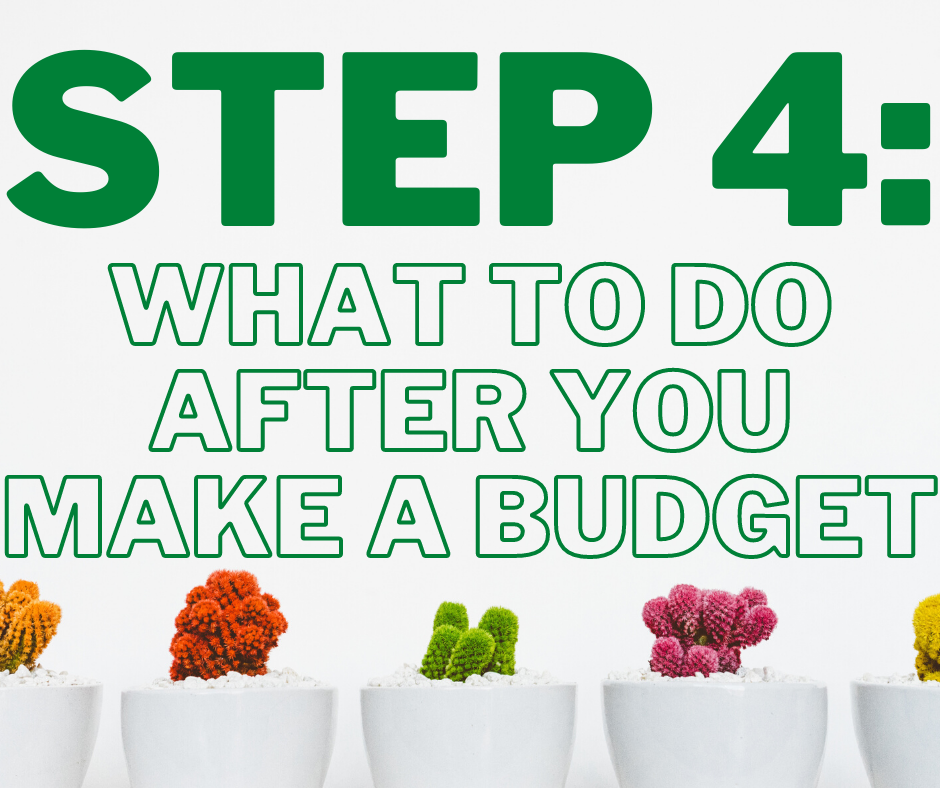
How to Become Debt-Free Step 4: What To Do After You Make a Budget
You have to stick to it and remember to plan ahead.
Sometimes things are going to come up that aren’t in your budget. Your child’s class pictures are coming up, you will need an oil change on your car next month, and it’s time for Sprinkles to go to the vet for her shots.
These are things you must plan for so you are not caught off-guard.
I know that sticking to a budget can be difficult. Telling ourselves “no” and delayed gratification isn’t something that many of ourselves are used to. The truth is that delayed gratification and making a budget is what enabled us to get out of debt at 25 years old and build our debt-free/ mortgage-free dream house at only 33 years old. It’s done. It’s paid for in full. It’s ours.
Read: Money Secrets of the Amish and How We Aren’t That Different
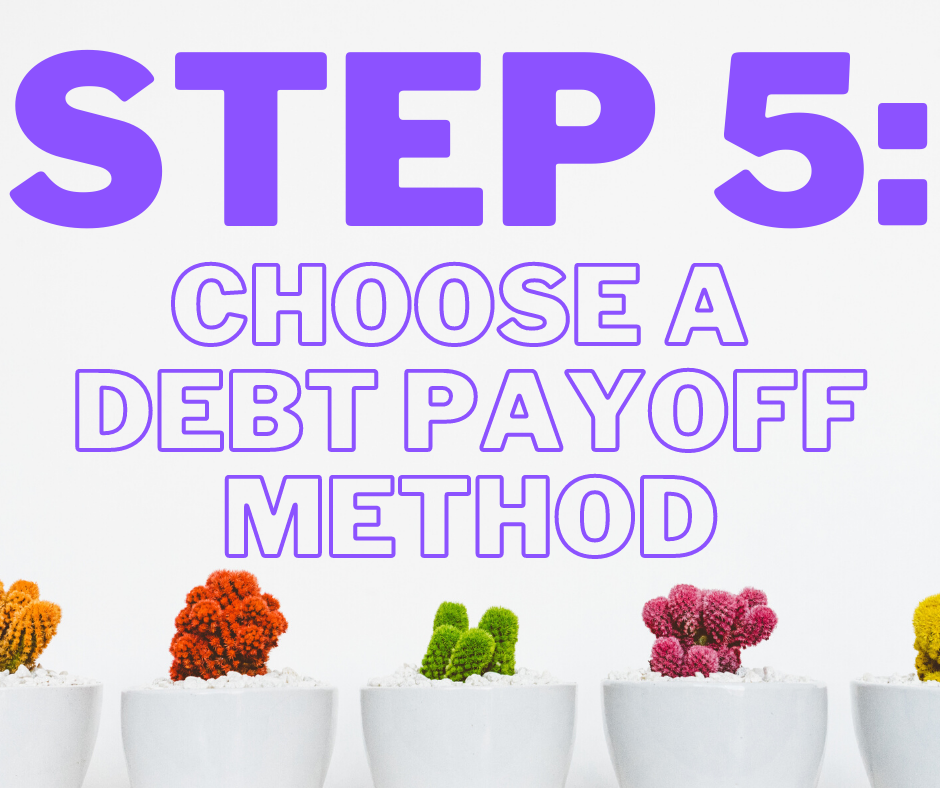
How to Become Debt-Free Step 5: Choose a Debt Payoff Method
There are three main debt-payoff methods. The snowball method is the most popular but be sure to choose a method that works best for you.
Debt Snowball Method
If your debt seems overwhelming to you, then this method is great for keeping you motivated. The Debt Snowball Method instructs you to pay off your smallest debt first then work your way up your list. This method will have you seeing progress sooner than other methods.
Here is how it works.
- List all of your debts in order according to how much you owe on them. You want to pay attention to the total amount owed, not the minimum monthly payment or the interest rate.
- Each month, you will pay the minimum payment on each debt. However, you will attack the debt with the lowest total amount owed with vengeance. Make the minimum payment PLUS as much extra as you can.
- Once you finish paying that small debt in full, cross it off your list.
- Then, attack the next highest debt on your list. Since this is called the “snowball method” you will take the minimum payment you used to pay on the previous small debt and apply it to the new debt in addition to the current minimum payment owed and overages you will apply to it.
- Keep your snowball rolling. With each debt payed off, cross them off your list and roll those minimum payments over into the next debt until you are debt free!
Debt Avalanche Method
This method is the opposite of the Debt Snowball Method. Instead of paying off the debt with the smallest total amount owed, you will pay off the debt with the highest interest rate first. This method will help you save hundreds of dollars in interest payments.
Here is how it works:
- List all of your debts in order according to their interest rate.
- Each month, you will pay the minimum payment on each debt. However, you will attack the debt with the highest interest rate with vengeance. Make the minimum payment PLUS as much extra as you can.
- Once you finish paying the debt with the highest interest rate in full, cross it off your list.
- Then, attack the next debt with the second highest interest rate.
- Work your way down your list until you are debt free!
Debt Scattered Thunderstorm Method
Ok, this isn’t an official method. I actually made this one up when I was paying off my student loans. All of my loans were about the same amount, so I made the minimum payments on all of the loans each month plus extra payments on all of them. I did this because I couldn’t stand to see one or more of the loans not drop significantly each month.
Here is how it works:
- List all of your debts regardless of amount owed.
- Each month, make the monthly minimum payments on all debts plus extra payments on each one.
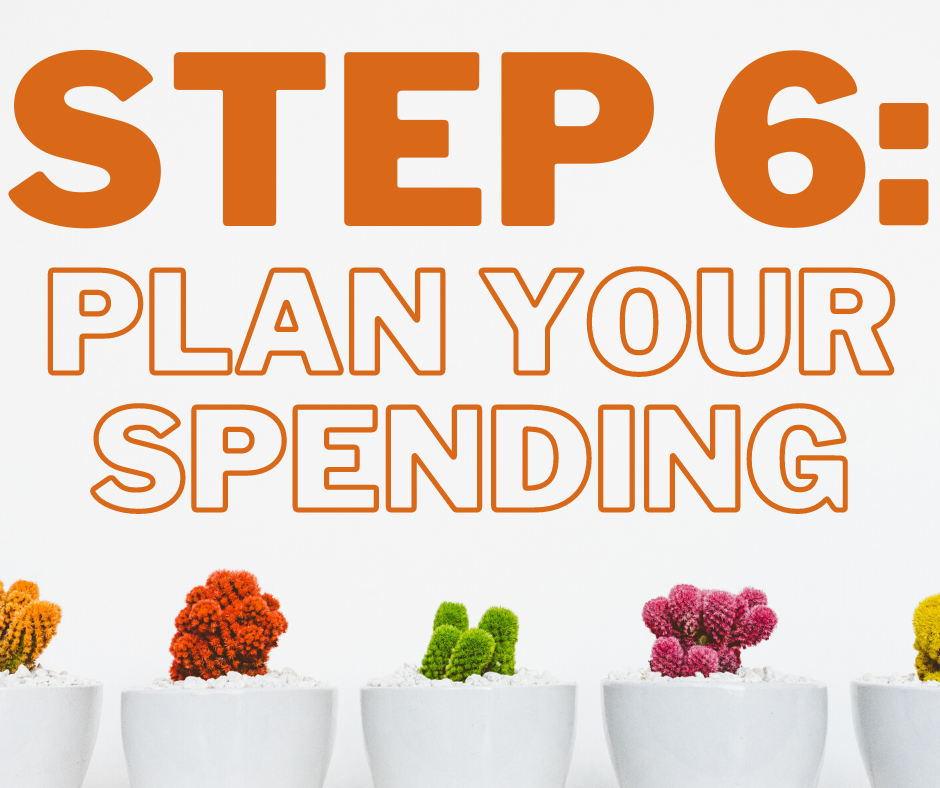
How to Become Debt-Free Step 6: Plan Your Spending
When you see an expensive coming in the future (i.e. you got that postcard in the mail from the vet that it’s time to make an appointment or your car insurance is always due in June), write it down on your expense sheet for the month and start saving for it.
Be prepared.
If you have an unexpected expense (like a car repair), use the cushion you left in your checking account. However, the key here is to plan for as many expenses as possible so you will always be ready. Then, as I said before, make sure you put your cushion money back.
Make Monthly Goals
Once you have your budget made, set goals for yourself.
For example, maybe you challenge yourself to find creative ways to cut your grocery bill by $10 extra so you can apply that money to your debt.
Maybe you decide to find out why your cell phone bill is so high and finally make the choice to switch to a less expensive provider like we did.
Everyone has different situations so all of our goals will be different. The point here is to challenge yourself and so always review your expense sheet for the month to see what you can do better next month.
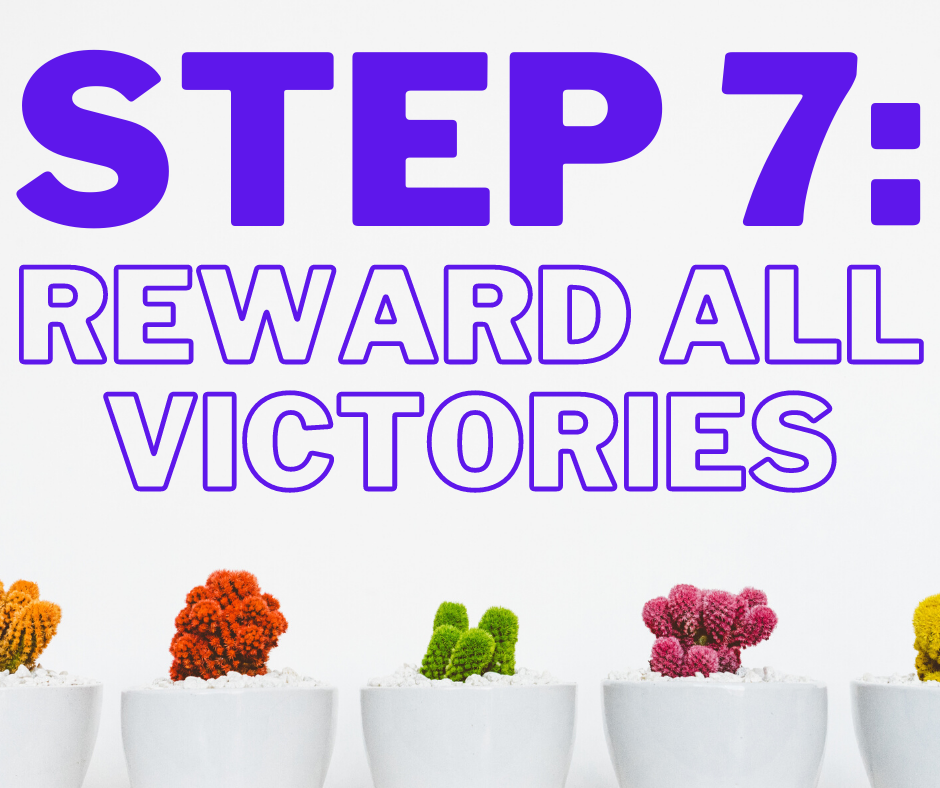
How to Become Debt-Free Step 7: Reward All Victories
You did it!
Let’s say you created a budget and you stuck to it for your first month. It’s time to celebrate!
Now, let’s be clear. Celebrating should not involve spending money. Otherwise, you will set yourself back and your entire month’s worth of hard work and dedication will be for nothing.
When I say “celebrate” I mean, make yourself a cup of hot tea and revel in your accomplishment or make a homemade pizza and have a date night at home with your spouse.
We always made multiple mortgage payments each month. So, when we made it to the end of the month, we would say things like, “We own the laundry room now!”
See, we’re silly like that.
We mentally divided our house up and we knew the percentage of it we owned based on how much of our mortgage we had paid off.
So, each time we paid more toward the mortgage, we would decide which room of the house we now “owned.”
It was silly but it really drove home what actually buying our house was like.
Another fun thing we always did was to dream about what we were going to do AFTER we were debt-free. That leads me to my next point…
What is it like to be debt-free?
When we were paying off our debt, we would let ourselves dream about what it was going to be like to be debt-free.
We would ask ourselves questions like “What will we do when we transition from our “debt-free journey” to our “debt-free lifestyle?” “What is it like to be Debt-Free?“
We would sit in our living room in our first little house and talk about this in the evenings.
What did we want to do when we were finally finished paying off our house? Because that would mean we would have no more debt (whatsoever) and we would feel completely free.
We decided to go on a cruise. (We would pay for it in full, naturally…NOT make payments or charge it.)
Actually, there were five things we did after we became debt-free.
And we had a blast!
Get Started
What are you waiting for?
Now, you know “How to become debt-free.” So, what are you waiting for?
It’s time to get started. Just follow each one of the points I laid out for you.
Feel free to leave me a comment if you have a question.
Also, be sure to join my email list for money-saving tips and inspiration.
I’m here for you.
We have been down that road and accomplished our goals.
You can do it too! I believe in you!
Once you become debt-free, you can enjoy the debt-free lifestyle! This is one instance where the grass is greener on the other side. Before you know it, you will be asking yourself, “I’m debt-free, now what?“
There are other “Debt Pay Off Blogs” out there but Big House in the Woods is the “Best Getting Out of Debt Blog”
Don’t feel like you are alone in this journey! If you are reading this, then you are looking for answers.
I have been in debt too. I conquered that debt a long while back and I’m a few steps ahead of you. So, consider me your debt-free big sister who is here to help.
Big House in the Woods is the best debt blog out there and I’ll give you three reasons why:
- I have been where you are.
- I’m not a millionaire who is out of touch with real life.
- I’m not going to charge you $500 for my advice.
Be sure to connect with me on Facebook for extra tips and inspiration.
All the best,
Lindsey
